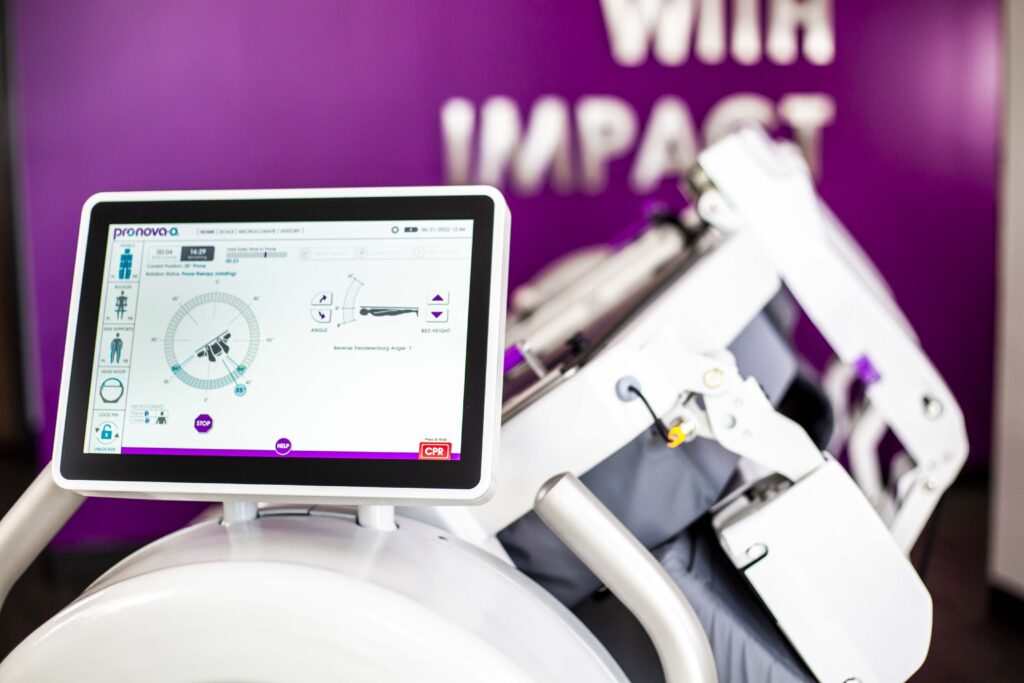
What Are the Benefits of Continuous Lateral Rotation?
Pronova-O2™ Automated Prone Therapy provides many advantages when caring for critically ill patients, including automated prone and supine positioning, as well as continuous lateral rotation therapy in the prone and supine positions up to 65 degrees bilaterally. Why is continuous lateral rotation therapy (CLRT) an important aspect of caring for critically ill patients?
Rotational therapy has been offered by many different products for several decades, and much research has been conducted on its benefits. One article discussed benefits of early intervention of rotational therapy such as shorter ICU length of stay (LOS), reduction in total hospital costs, and trends toward reduced ventilator LOS and hospital LOS.1 Another article cited that CLRT has the potential to help prevent nosocomial infections for patients at risk.2 A recent publication also compared patients with CLRT (a rotation of a 90 degree arc, or 45 degrees to each side), and without CLRT, and found a reduction in ventilator-associated pneumonia, ventilation days, and hospital LOS.3
It is obvious with other standard-of-care practices in the ICU that mobility is key to recovery from critical illness. CLRT has the potential to be a key factor in recovery with early intervention and appropriate use. Pronova-O2 provides rotational therapy up to 65 degrees bilaterally in both the supine and prone position to support patient recovery and to prevent and treat pulmonary complications associated with immobility.
The Pronova-O2 Automated Prone Therapy System provides a safe and efficient method for positioning critically ill patients. For additional information on automated prone positioning, please visit turnmedical.com or call 1-855-275-8876. Refer to Pronova-O2 Instructions for Use for full prescribing information including risks.
- Swadener-Culpepper, L., Skaggs, R. L., & Vangilder, C. A. (2008). The impact of continuous lateral rotation therapy in overall clinical and financial outcomes of critically ill patients. Critical care nursing quarterly, 31(3), 270–279.
- Wanless, S., & Aldridge, M. (2012). Continuous lateral rotation therapy – A review. Nursing in critical care, 17(1), 28–35. https://doi.org/10.1111/j.1478-5153.2011.00458.x
- Staudinger, T., Bojic, A., Holzinger, U., Meyer, B., Rohwer, M., Mallner, F., Schellongowski, P., Robak, O., Laczika, K., Frass, M., & Locker, G. J. (2010). Continuous lateral rotation therapy to prevent ventilator-associated pneumonia. Critical care medicine, 38(2), 486–490.






